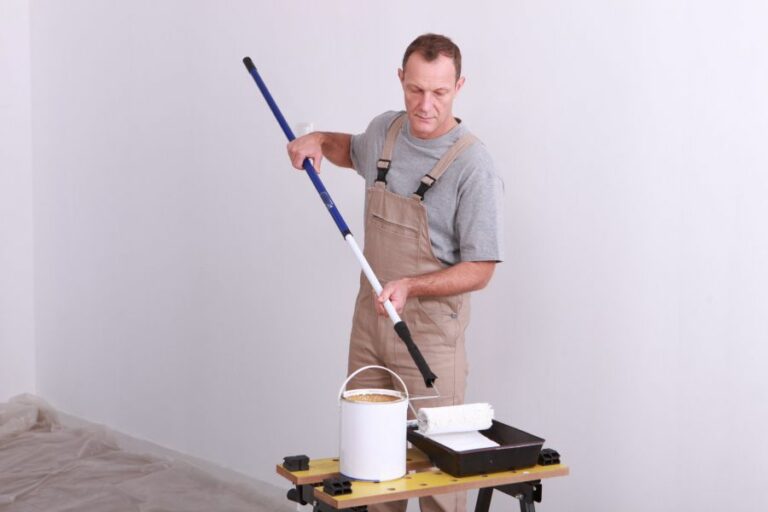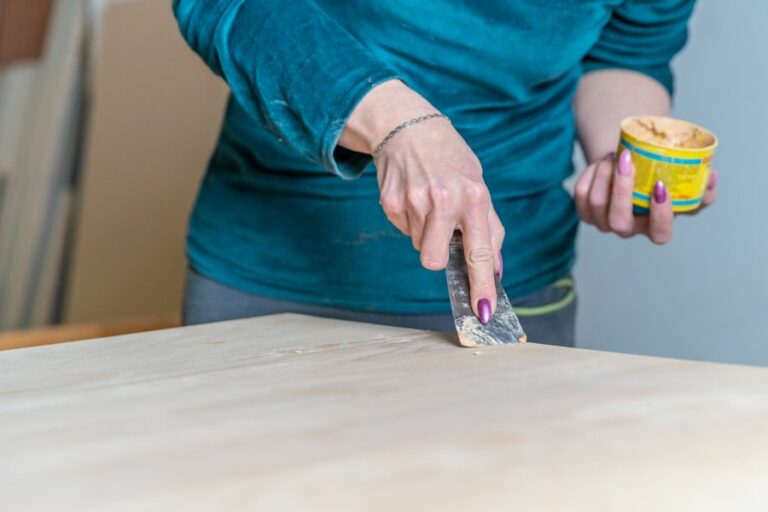Proper Environmental Conditions For Effective Surface Preparation
When it comes to ensuring the effectiveness of a surface preparation process, paying close attention to environmental conditions is crucial. Optimizing the environment can significantly contribute to improving the durability and performance of the resultant protective coatings, ultimately prolonging the lifespan of the surface. With a wealth of experience and expertise, we are here to help you navigate through the essential factors that play a vital role in creating proper environmental conditions for successful surface preparation.
Proper environmental conditions for effective surface preparation:
Optimal environmental conditions for efficient surface preparation involve maintaining a temperature range between 50°F to 100°F (10°C to 38°C) and a relative humidity level of 40% to 70%. Proper temperature and humidity aid in material behavior, contaminant removal, and prevention of surface condensation, ensuring effective adhesion and long-lasting results.

Discover the optimum environment for surface preparation and its impact on project success. Uncover the factors that influence effective surface preparation and delve deeper into the importance of these conditions in the lifespan of various coatings. Read on for more expert insights!
Contents
- 1 Optimal Environmental Conditions for Efficient Surface Preparation
- 2 Key Atmospheric Factors to Assess Prior to Applying Coatings
- 3 Essential Environmental Considerations for Surface Preparation Before Painting
- 4 Crucial Elements to Evaluate in Surface Preparation Processes
- 5 Ideal Environmental Conditions for Effective Coating Applications
Optimal Environmental Conditions for Efficient Surface Preparation
Surface preparation is a vital step in many industrial processes, from painting and coating to bonding and welding. Proper environmental conditions play a crucial role in achieving the desired results and ensuring the longevity of the applied materials.
• Importance of Temperature and Humidity
Temperature and humidity are two of the most critical environmental factors affecting the surface preparation process. Let’s look at the impact of these factors on various aspects of surface preparation:
– Material Behavior
Materials such as paints, coatings, and adhesives undergo significant changes in their behavior depending on the surrounding temperature and humidity levels.
For instance, high temperatures can cause the materials to dry too quickly, leading to defects such as cracking, pinholes, and premature failure. Conversely, low temperatures can prolong the drying and curing times, affecting the material’s adhesion and overall performance.
– Surface Condensation
The formation of condensation on the surface can cause several problems, such as poor adhesion and increased susceptibility to corrosion.
When humidity is too high, moisture can accumulate on the surface, forming a barrier between the material and the substrate. Ensuring that the relative humidity is controlled helps prevent condensation problems, thereby ensuring effective adhesion and long-lasting results.
– Contaminant Removal
Maintaining proper temperature and humidity levels is essential for efficient contaminant removal. The effectiveness of cleaning agents and methods used to remove surface contaminants, such as oil, grease, and dust, can be severely impacted by inadequate environmental conditions.
• Recommended Temperature and Humidity Levels
While specific recommendations will depend on the materials being used and the specific process requirements, general guidelines can help create a suitable environment for surface preparation. Here are some recommendations based on industry standards and experience:
- Temperature: Maintain a temperature range between 50°F to 100°F (10°C to 38°C) for most surface preparation processes. However, consult the manufacturer’s guidelines for specific materials, as some may require stricter temperature controls.
- Relative Humidity: A relative humidity level between 40% and 70% is recommended for most surface preparation processes. Higher humidity levels can lead to increased condensation on the surface, while lower levels can cause materials to dry too fast.
• Monitoring and Controlling Environmental Conditions
To ensure proper environmental conditions in the work area, it is essential to monitor and control temperature and humidity actively. Some measures to maintain the recommended conditions include:
– Temperature Controls
- Use air conditioning units, heaters, or fans to regulate the temperature within the workspace.
- Place temperature-sensitive materials in climate-controlled storage areas.
- Schedule work during times of the day with favorable temperature conditions, if possible.
– Humidity Controls
- Use dehumidifiers to lower high humidity levels in the work area.
- Utilize proper ventilation systems to help control moisture and reduce condensation.
- Schedule work during times of the day with favorable humidity conditions, if possible.
– Monitoring Devices
- Install temperature and humidity sensors in the work area to monitor conditions continuously.
- Use handheld monitoring devices for quick spot checks and assessments.
- Maintain proper documentation of the environmental conditions throughout the surface preparation process.
• Final Considerations
Environment plays a critical role in ensuring effective and long-lasting results in surface preparation processes. By maintaining proper temperature and humidity levels, many potential problems can be avoided, and the quality of the finished product can be significantly improved.
These organizations provide valuable guidelines, standards, and resources related to surface preparation, coating, and corrosion control in the industrial sector.
Key Atmospheric Factors to Assess Prior to Applying Coatings
The successful application of a coating depends on several factors, including the proper preparation of surfaces and materials and a thorough understanding of the prevailing atmospheric conditions.
• Temperature and Its Effects on Coating Performance
Temperature plays a vital role in the performance of coatings, affecting both the drying and curing processes, as well as the coating’s overall performance characteristics.
– Ambient Temperature
The ambient temperature, which is the temperature of the surroundings, can have a significant impact on coating performance.
It is important to consider the manufacturer’s guidelines regarding the suitable temperature range for coating applications. Typically, this range is between 10°C (50°F) and 35°C (95°F) for most coatings.
For optimal results, I recommend applying coatings during the cooler parts of the day, such as early morning or late afternoon. This will allow the coatings to dry and cure under favorable conditions, thereby reducing potential defects and issues.
– Surface Temperature
Another critical temperature factor to consider is the surface temperature of the material being coated. This can differ significantly from the ambient temperature. It must be measured and considered when selecting and applying a coating.
To accurately measure the surface temperature, use an infrared thermometer or other suitable surface temperature measuring devices. Surface temperature should ideally fall within the recommended range specified by the coating manufacturer.
• Humidity and Its Impact on the Coating Application
Humidity, or the amount of moisture in the air, can strongly affect the performance of coatings during and after application.
High humidity levels can lead to several problems, including slow drying times, reduced adhesion, and the formation of defects such as blushing, blooming, or condensation on the coated surface.
As a general rule, avoid applying coatings when the relative humidity is above 85%. As with temperature, it is essential to follow the manufacturer’s guidelines concerning humidity levels during the coating application.
To measure the humidity, use a hygrometer or other suitable humidity-measuring devices. Furthermore, consider the use of dehumidifiers, heaters, or air movers to control humidity levels if necessary.
• Wind and Atmospheric Contaminants
Wind speed and atmospheric contaminants can have a significant impact on the quality of the coating application.
Strong winds can lead to uneven application and poor film thickness control, while atmospheric contaminants such as dust, pollen, or nearby pollutant sources can cause defects in the final coating.
Be cautious when applying coatings in windy conditions. Ideally, wind speeds should not exceed 16 km/h (10 mph). It may be helpful to use windbreaks, screens, or other methods to minimize the impact of wind on the application.
To determine wind speed, use an anemometer or other suitable device. Additionally, inspect the surrounding environment for potential sources of contamination and take appropriate precautions.
• Dew Point Considerations
The dew point, which is the temperature at which air becomes saturated with moisture, is an essential factor in determining condensation risk on the surface to be coated. Surface temperatures below the dew point can create problems such as moisture film, poor adhesion, or defects on the coated surface.
To avoid these issues, ensure that the surface temperature is at least 3°C (5°F) above the dew point during the coating application process.
To calculate the dew point, use psychrometric charts or dew point calculators available online, such as the one provided by the National Oceanic and Atmospheric Administration (NOAA) at this link.
• In Conclusion
Applying a coating under the proper atmospheric conditions is crucial in ensuring optimal performance and longevity of the coating.
Before starting any coating application, carefully monitor and control the factors discussed in this article: ambient and surface temperature, humidity, wind speed, atmospheric contaminants, and dew point.
By adhering to these guidelines and the recommendations provided by coating manufacturers, you can achieve a successful and long-lasting coating application, ensuring the protection, aesthetics, and functionality of the coated surfaces for years to come.
Parameter | Description |
|---|---|
Temperature | Measure the ambient temperature and surface temperature to ensure they are within the recommended range for the coating material. |
Humidity | Measure relative humidity to ensure it is within the recommended range for the coating material. High humidity can cause issues such as blistering or poor adhesion. |
Dew point | Determine the dew point and ensure that surface temperature is above it (typically at least 3-5 degrees) to avoid moisture-related issues. |
Wind speed | Maintain appropriate wind conditions to avoid overspray, poor application, or contamination of the coating. |
Air quality | Monitor the cleanliness of the air to minimize the risk of particulate contamination, especially if applying coating in an outdoor or uncontrolled environment. |
Precipitation | Ensure there is no precipitation, such as rain, snow, or fog, which could compromise the coating application or curing process. |
Essential Environmental Considerations for Surface Preparation Before Painting
• Importance of Environmental Conditions
When preparing new surfaces for painting, it is essential to consider the environmental conditions to ensure the best results.
Proper environmental requirements play a significant role in the adhesion, drying, and overall appearance of the paint. Failure to account for these factors may result in poor adhesion, slow drying, and surface defects, which can compromise the quality, aesthetics, and longevity of the paint.
• Optimal Temperature Range
Temperature is a crucial factor to consider when preparing surfaces for painting. Most paint manufacturers recommend a specific temperature range to achieve the best results with their products. Generally, an optimal temperature range for painting is between 50°F (10°C) and 85°F (29°C).
Temperatures outside of this range can negatively impact the paint’s application, drying, and overall performance. For instance:
- Low temperatures can cause the paint to become too viscous, making it difficult to apply and preventing it from adhering properly to the surface. Additionally, low temperatures slow down the drying process, which can lead to surface defects such as sagging or the paint failing to cure properly.
- High temperatures can cause the paint to dry too quickly, resulting in inadequate surface bonding, brush marks, or uneven coverage. Furthermore, extreme heat can cause the paint to blister or bubble due to rapid solvent evaporation.
To ensure accurate temperature readings, use a reliable thermometer to measure the surface, air, and paint temperature. Adjust the environment accordingly or choose a day with appropriate conditions for painting.
If working indoors, consider using portable heaters or air-conditioning units to regulate the temperature.
• Proper Humidity Levels
Relative humidity (RH) is another significant environmental factor in painting projects. High humidity levels can prolong drying times and cause surface defects, such as blushing or cloudiness in the paint film.
Conversely, low humidity levels can cause the paint to dry too quickly, leading to poor leveling, brush marks, or uneven coverage.
A general recommendation is to maintain a relative humidity level of 40%-70% during the painting and drying process. To measure the ambient humidity, use a hygrometer and make adjustments as needed.
If the humidity levels are too high, consider using dehumidifiers or increasing air circulation to help lower the moisture levels in the environment. If low humidity is an issue, humidifiers can be used to increase the moisture content in the air.
• Adequate Ventilation
Proper ventilation is essential in any painting project to ensure a safe working environment and speed up the drying process. Adequate air circulation helps to evaporate the paint’s solvents and remove potentially harmful fumes.
Furthermore, increased ventilation can help reduce humidity levels and mitigate any adverse effects of high humidity on the paint film.
When painting indoors, keep windows and doors open to increase airflow, and use exhaust fans to remove fumes. Additionally, you may use portable fans to enhance air circulation. However, avoid directing fans directly onto the wet paint to prevent dust or debris from settling on the surface.
When painting outdoors, try to work on a day with light winds to promote proper ventilation while minimizing dust and debris on the paint surface.
• Conclusion
Considering the environmental requirements relevant to preparing new surfaces for painting is essential in ensuring the paint’s proper application, drying, and longevity.
By maintaining optimal temperature, humidity, and ventilation, you can achieve exceptional results for your painting projects while avoiding common issues that stem from environmental factors.
Crucial Elements to Evaluate in Surface Preparation Processes
Proper surface preparation is crucial for a successful construction project, whether it’s for casting concrete, painting, tiling, or applying a finish.
Many factors need to be taken into consideration, and overlooking any single one can lead to poor results that waste both time and resources. Today, we’ll discuss the crucial factors to consider when preparing the surface for various construction applications.
• Assessing the Existing Surface Condition
The first step in preparing the surface is to evaluate its current condition. This includes identifying any loose or damaged materials, oil or grease stains, and potential issues with moisture.
Evaluating the surface will help determine how much preparation is necessary and what type of products or treatments will be most appropriate for the application.
– Loose and Damaged Materials
One major factor is to identify loose, damaged, or deteriorated materials, as these can adversely affect the adhesion and performance of various coatings, finishes, and other applications.
Properly removing these materials can be achieved through methods like mechanical grinding, sanding, or even pressure washing, depending on the type and degree of damage.
– Oil, Grease, and Contaminants
Removing oil and grease from surfaces is essential in order to ensure proper adhesion and the longevity of coatings or treatments. This can typically be achieved using degreasing agents or surfactants, followed by a thorough rinse with water or other appropriate cleaning solution.
– Moisture Issues
Moisture is another important element to consider in surface preparation. Excessive moisture can lead to problems such as mold, mildew, and poor adhesion.
It’s crucial to test for moisture on the surface and, if necessary, take steps to reduce it to acceptable levels, like employing dehumidifiers or altering the construction timeline to allow for proper drying.
• Surface Preparation Techniques
The chosen surface preparation technique should be based on the type of application, the intended use of the surface, and the condition of the existing surface material. Some of the most common techniques are:
– Sanding and Grinding
Sanding and grinding are both effective methods for removing damaged or loose material and creating a smoother and more uniform surface. These techniques are especially useful for preparing surfaces for painting, as they help to create a better bond between the paint and the underlying material.
– Pressure Washing
Pressure washing is a versatile, time-saving technique that can effectively remove loose surface materials, dirt, and debris. It can be used to clean and prepare a variety of surfaces, including masonry, wood, and metal.
However, it’s important to use caution, as excessive pressure can cause damage and could create further issues on the surface.
– Etching
Chemical etching utilizes acid or alkali solutions to roughen or “etch” the surface, providing better adhesion for coatings and treatments. Etching is commonly used when preparing concrete surfaces, as it removes the surface laitance, a thin, weak layer of cement, and helps expose the underlying aggregate.
– Priming
Applying a primer is an essential step when preparing surfaces for painting or other treatments. Primers help create a strong bond between the surface and the topcoat, ensuring that the final layer adheres securely and performs well over time.
There are numerous primer options available, and it’s important to choose one that is compatible with both the surface type and the intended topcoat.
• Importance of Environmental Factors
Lastly, it’s essential to consider the environment in which the surface preparation and application will be carried out. This includes factors such as ambient temperature, humidity, dust, or other airborne contaminants.
These factors can significantly impact the performance of coatings, adhesives, and other treatments, so it’s essential to take them into account when preparing a surface.
– Ambient Temperature
Temperature affects the drying and curing times of applied materials, so it’s crucial to work within the recommended application temperature range for the specific product being used.
Additionally, significant temperature fluctuations can cause materials to expand and contract, which may lead to cracking or other damage.
– Humidity
Excessive humidity can also negatively affect drying and curing times, as well as the adhesion and performance of certain treatments. Monitoring and regulating the site’s humidity is important to ensure optimal results.
– Dust and Airborne Contaminants
It’s essential to keep the prepared surface clean and free of contamination throughout the entire process. Dust and other airborne contaminants, if not properly managed, can compromise the adhesion, appearance, and overall performance of the applied treatment.
• Conclusion
Preparing a surface for construction applications is a crucial process that must consider a range of factors.
To ensure successful and long-lasting results, it’s essential to thoroughly assess the existing surface condition, choose appropriate preparation techniques, and remain conscious of environmental factors throughout the process.
By doing so, you can ultimately achieve durable and reliable surface applications that withstand the test of time.
Ideal Environmental Conditions for Effective Coating Applications
Coatings play a crucial role in protecting materials from environmental degradation, such as corrosion, wear, ozone, UV radiation, and chemical attacks.
Understanding the specific environmental conditions and their impact on coatings is essential for the proper selection and maintenance of these protective layers.
• Temperature
Temperature fluctuations are one of the primary factors that affect the durability and performance of coatings. Both high and low temperatures can cause various issues in coating materials:
– High Temperatures
High temperatures can lead to the following problems:
- Thermal Expansion: Coatings subjected to high temperatures are prone to expand due to increased thermal energy. This expansion can lead to cracking or delamination of the coating layer, which exposes the underlying material to environmental damage.
- Thermal Degradation: High temperatures can cause chemical changes in the coating material, resulting in a weakened coating layer and decreased protection.
- Curing Issues: High temperatures can also interfere with the curing process of some coating systems, leading to improper bonding, blistering, or insufficient film thickness.
Recommendation: Choose a temperature-resistant coating designed to withstand the expected temperature range. Additionally, ensure proper surface preparation and application techniques to minimize adverse effects from temperature fluctuations.
– Low Temperatures
Low temperatures can cause issues in some coating systems:
- Brittleness: Some materials become brittle at low temperatures, making them more prone to cracking and chipping.
- Curing Delays: A decrease in temperature can cause extended curing times, leading to delays and potential defects in the coating layer.
- Condensation: Low temperatures can lead to condensation on the coated surface, which can negatively affect the coating’s adhesion.
Recommendation: Choose a coating system designed for low-temperature applications and ensure proper surface preparation to minimize moisture-related issues.
• Humidity
Humidity plays a crucial role in the performance of coatings, as it influences the curing process and the potential for corrosion and other moisture-related issues. Higher humidity levels can cause the following problems:
- Reduced Adhesion: High humidity can interfere with the adhesion of some coatings, leading to poor bonding and potential delamination.
- Blistering and Pinholes: Increased humidity can cause moisture to become trapped within the coating, leading to blistering and pinhole defects.
- Corrosion: Excessive humidity can diffuse through the coating, leading to accelerated corrosion of the underlying material.
Recommendation: Monitor and control humidity levels during application and curing processes, and choose a coating system designed to resist moisture penetration. The use of a moisture barrier or primer layer may be necessary to prevent moisture-related issues.
• Ultraviolet (UV) Radiation
UV radiation from the sun can cause significant damage to coatings, especially those with poor UV resistance. Some common issues associated with UV radiation are:
- Chalking: UV radiation can cause the breakdown of some coating materials, resulting in a chalky, white substance on the surface.
- Color Fading: Exposure to UV light can cause some pigments and dyes to decompose, leading to a fading or change in color.
- Loss of Gloss: UV degradation can lead to a dull, matte appearance on the coated surface.
Recommendation: Choose a coating system with UV-resistant properties and pigment some coatings to ensure color retention over time.
• Chemical Exposure
Coatings can come into contact with various chemicals, including acids, bases, solvents, and other aggressive substances. Chemical exposure can cause the following issues:
- Swelling: Interaction with certain chemicals can cause coatings to swell, potentially leading to weakened adhesion and coating failure.
- Chemical Attack: Some coatings may be susceptible to chemical attack, leading to deterioration and loss of protective properties.
- Discoloration: Some chemicals can cause discoloration or staining of the coating surface.
Recommendation: Assess the potential for chemical exposure and choose a coating system with appropriate chemical resistance properties. Ensure proper surface preparation and application to prevent chemical ingress.
• Mechanical Stress
Coatings can experience various forms of mechanical stress, such as abrasion, impact, and bending. Mechanical stresses can cause the following issues:
- Cracking: Excessive mechanical stress can cause coatings to crack, exposing the underlying material and decreasing overall protection.
- Wear: Abrasive stresses can lead to the thinning or removal of the coating layer, reducing its level of protection.
- Delamination: Mechanical stresses can cause the coating layer to separate from the adherent’s surface, leading to potential corrosion or environmental damage.
Recommendation: Consider the potential mechanical stresses and choose a coating system designed to withstand the anticipated levels of wear and stress. Proper application techniques and maintenance practices can also help to mitigate mechanical stress-related issues.
In conclusion, understanding the environmental conditions and their impact on coatings is essential for selecting the appropriate coating system and ensuring its long-term performance.
By carefully considering factors such as temperature, humidity, UV radiation, chemical exposure, and mechanical stress, coatings can provide effective protection against environmental degradation and prolong the service life of the materials they protect.
Environmental Condition | Description |
|---|---|
Temperature | Both low and high temperatures can affect the curing process and performance of coatings. The optimal temperature range may vary for different types of coatings. |
Humidity | High humidity may cause corrosion and affect the drying process of coatings. Proper ventilation and environmental control can help. |
UV Exposure | Long-term exposure to ultraviolet (UV) radiation can cause coatings to degrade, discolor, or lose gloss. UV-resistant coatings may help reduce the effects of UV exposure. |
Chemical Exposure | Coatings may be exposed to various chemicals, which can cause them to lose adhesion, corrode or degrade. Chemical-resistant coatings should be chosen based on the specific environment. |
Abrasion | Mechanical wear and tear can cause coatings to lose adhesion, resulting in reduced protection. Abrasion-resistant coatings can help improve durability. |
Salt Exposure | Coatings in marine environments or areas with high salt content in the air or water may experience accelerated corrosion. Salt-resistant coatings are important for these conditions. |
Atmospheric Pollution | Coatings can be affected by exposure to atmospheric pollutants such as SO2, NOx, and particulate matter. Antipollution coatings can help provide protection in polluted environments. |
Biological Growth | Microorganisms, fungi, and algae can cause coating failure by breaking down the coating material or causing discoloration. Antifouling and antimicrobial coatings can help prevent biological growth on surfaces. |







